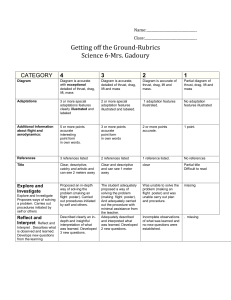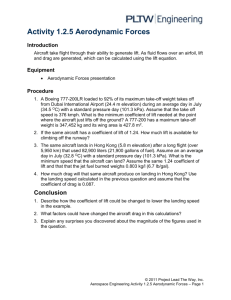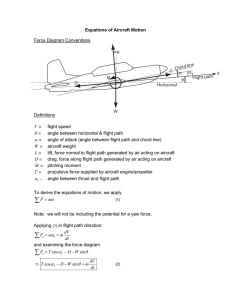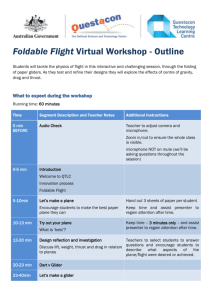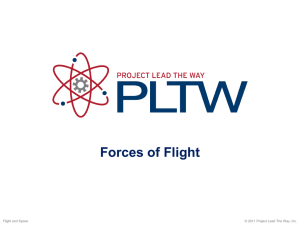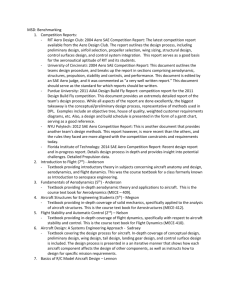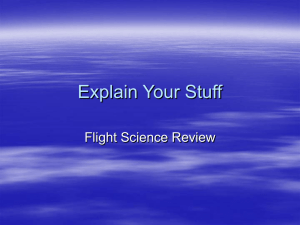EMEC 368 Introduction to Aerospace Course Project Design and
advertisement
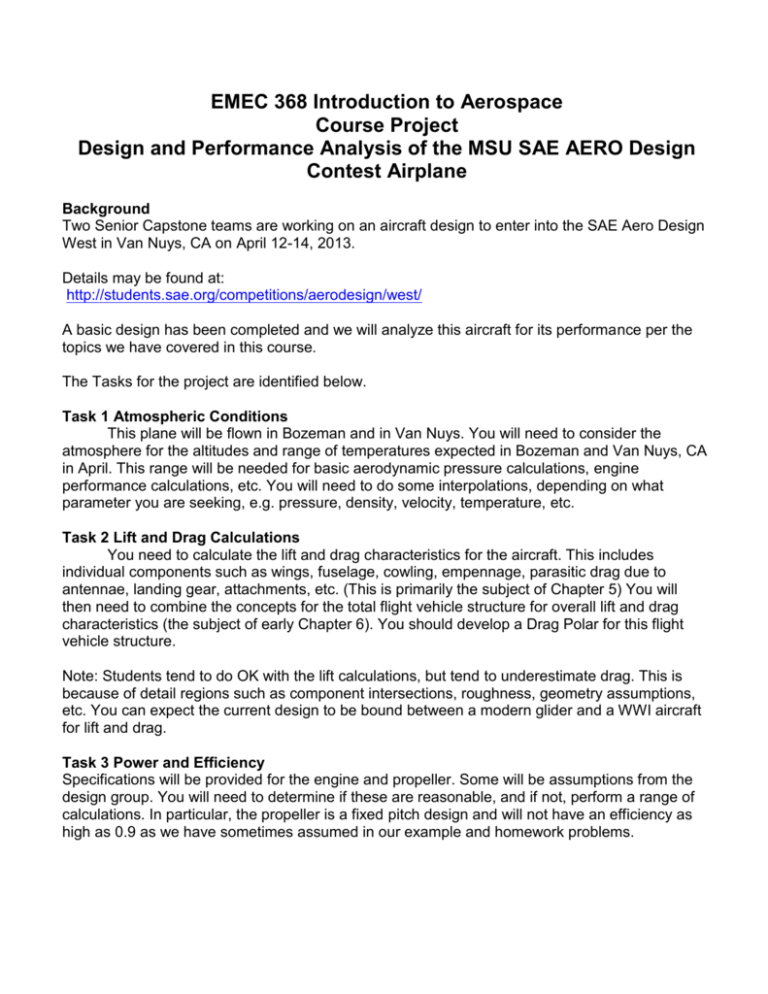
EMEC 368 Introduction to Aerospace Course Project Design and Performance Analysis of the MSU SAE AERO Design Contest Airplane Background Two Senior Capstone teams are working on an aircraft design to enter into the SAE Aero Design West in Van Nuys, CA on April 12-14, 2013. Details may be found at: http://students.sae.org/competitions/aerodesign/west/ A basic design has been completed and we will analyze this aircraft for its performance per the topics we have covered in this course. The Tasks for the project are identified below. Task 1 Atmospheric Conditions This plane will be flown in Bozeman and in Van Nuys. You will need to consider the atmosphere for the altitudes and range of temperatures expected in Bozeman and Van Nuys, CA in April. This range will be needed for basic aerodynamic pressure calculations, engine performance calculations, etc. You will need to do some interpolations, depending on what parameter you are seeking, e.g. pressure, density, velocity, temperature, etc. Task 2 Lift and Drag Calculations You need to calculate the lift and drag characteristics for the aircraft. This includes individual components such as wings, fuselage, cowling, empennage, parasitic drag due to antennae, landing gear, attachments, etc. (This is primarily the subject of Chapter 5) You will then need to combine the concepts for the total flight vehicle structure for overall lift and drag characteristics (the subject of early Chapter 6). You should develop a Drag Polar for this flight vehicle structure. Note: Students tend to do OK with the lift calculations, but tend to underestimate drag. This is because of detail regions such as component intersections, roughness, geometry assumptions, etc. You can expect the current design to be bound between a modern glider and a WWI aircraft for lift and drag. Task 3 Power and Efficiency Specifications will be provided for the engine and propeller. Some will be assumptions from the design group. You will need to determine if these are reasonable, and if not, perform a range of calculations. In particular, the propeller is a fixed pitch design and will not have an efficiency as high as 0.9 as we have sometimes assumed in our example and homework problems. Task 4 Performance Over the range of atmospheric conditions expected for the MSU SAE Aero flight vehicle, you should estimate a range of expected performance expected for the following: Thrust required for level, unaccelerated Flight Thrust available at maximum velocity Power required for level, unaccelerated flight Power available and maximum velocity Altitude effects on power required and power available The plane will be tested in Bozeman, but flown in Van Nuys. What differences in performance do you expect? Rate of Climb Gliding Flight Absolute and Service Ceilings Time to Climb Range and Endurance Max Over the flight conditions of the contest Takeoff Performance Landing Performance An estimated V-n diagram Task 5 Stability and Control The motivation of this task is to determine how difficult this airplane will be to fly, and if it has enough control authority for the intended flights. Static Stability Dynamic Stability (estimates) Absolute Angle of Attack Longitudinal Stability Contribution of wing Contribution of the tail Elevator conditions on stability Fixed Free Directional Static Stability Lateral Static Stability This project will NOT require a formal report. However, a hard copy presentation will be turned in. This will include appendices with any supporting assumptions (including validations) and calculations for your results. The presentations will be given in 10 min. segments during the final time for this course (2:00PM – 3:50PM, December 14, 2012).

